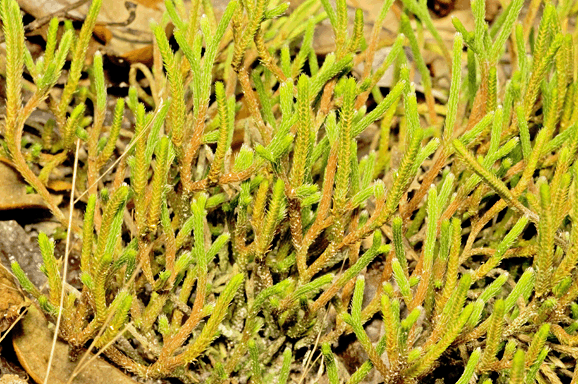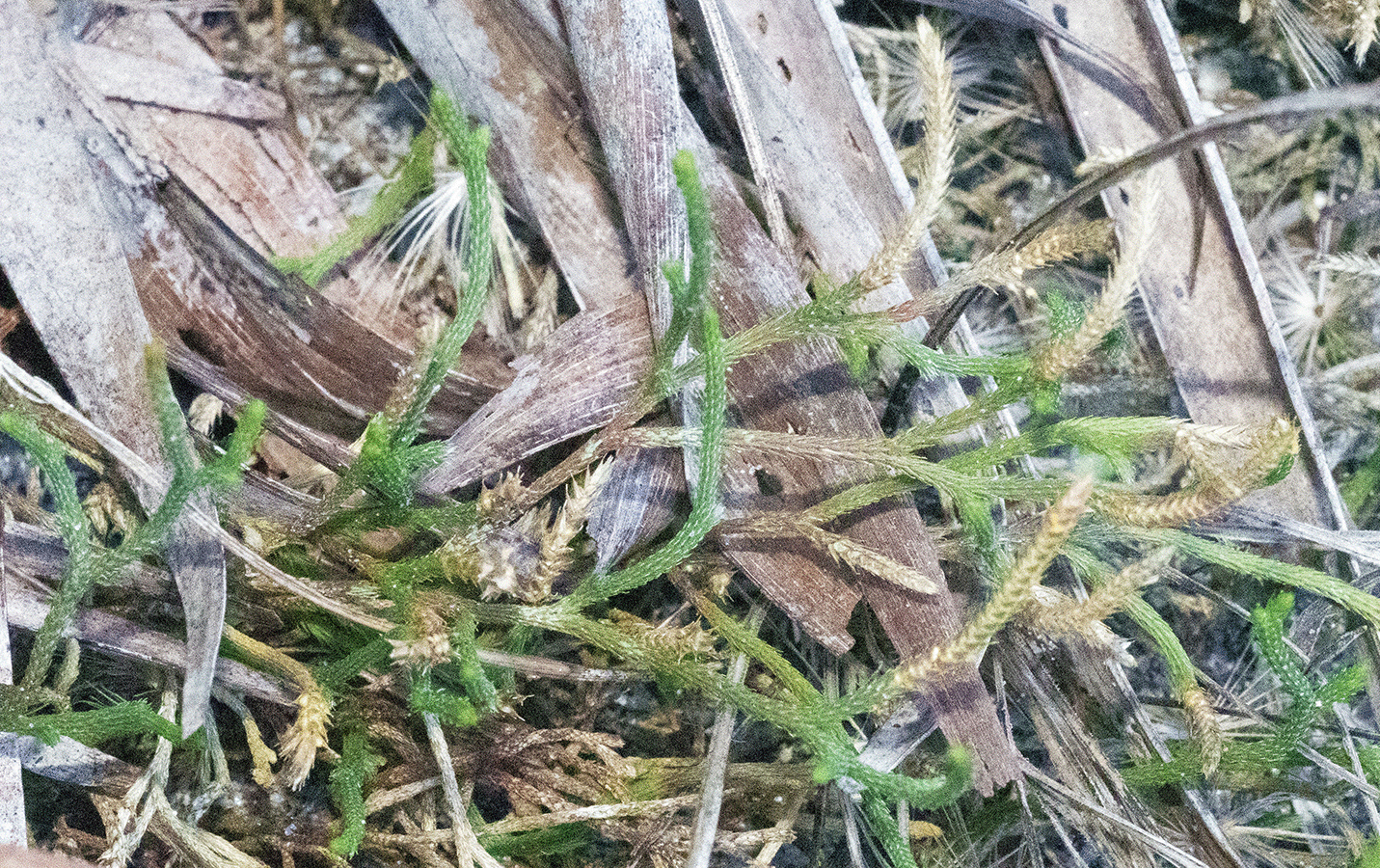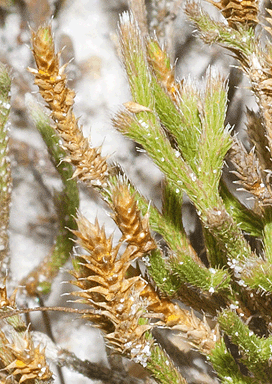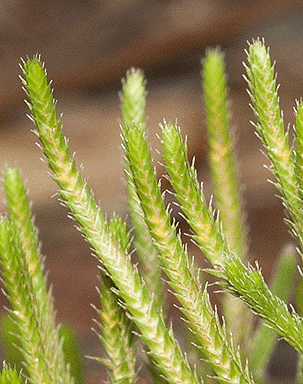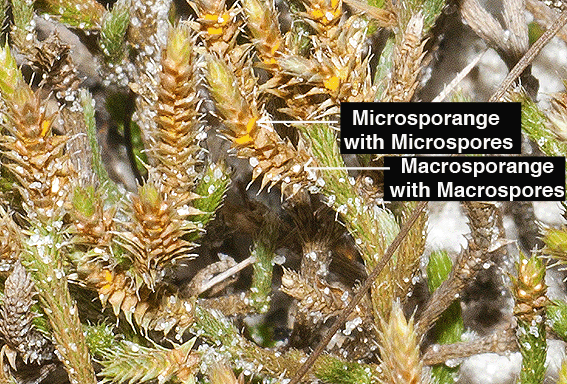Lycopodiophytes (Club Mosses) in the Christopher B. Smith Preserve
Lycopodiophyte Characteristics: Lycopods are a very ancient group of plants. Fossils date back 410 million years. During the Carboniferous Period, tree-like lycopods formed huge forests. Today, there are approximately 1,200 living species. Lycopods reproduce by shedding spores and have macroscopic alternation of generations. Their leaves have only a singular vein, unlike ferns and other plants.
Interactions in the Smith Preserve: Like other plants, lycopods convert energy of sunlight to energy other organisms can use. The conversion process is photosynthesis and the energy club mosses produce is distributed to animals through the food web. Also during photosynthesis, club mosses produce oxygen. In addition, lycopodiophytes provide habitat for other organisms.
Phylum |
Family |
Species Name |
Common Name |
Lycopodiophyta |
Salaginellaceae |
Selaginella arenicola |
Sand Spike-Moss |
Selaginella arenicola Sand Spike-Moss
|

